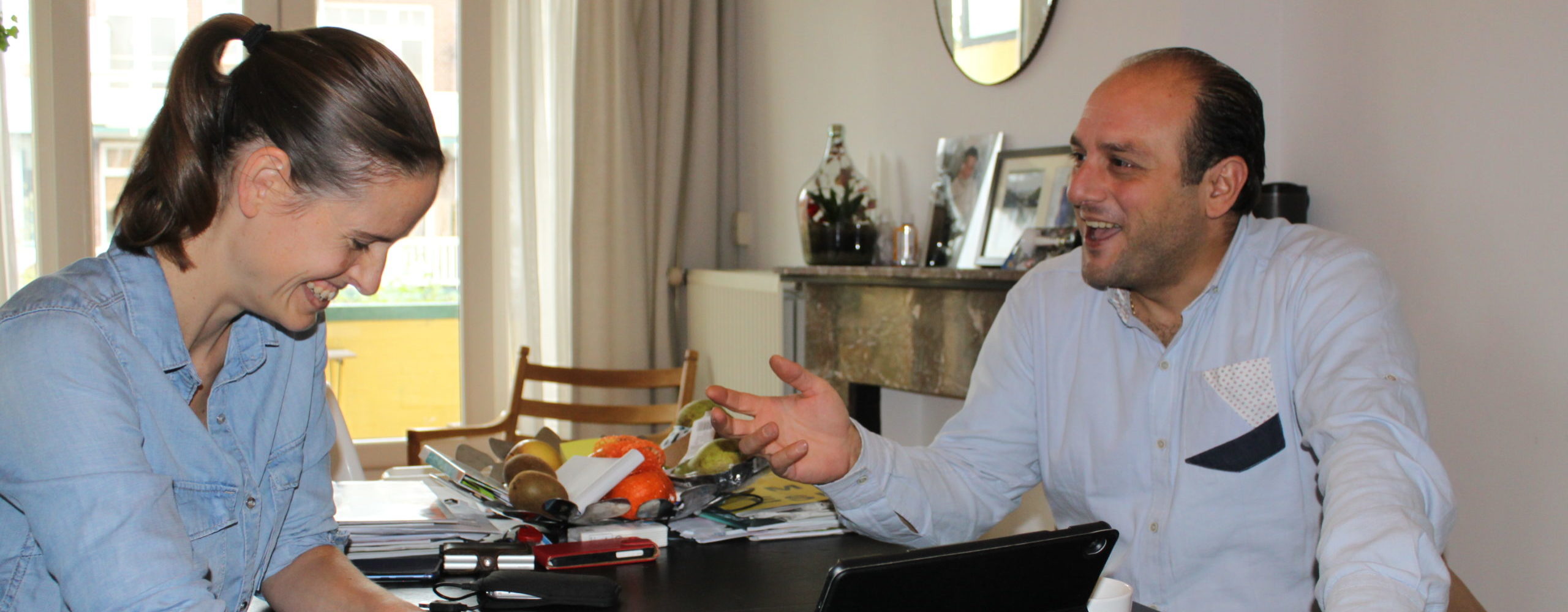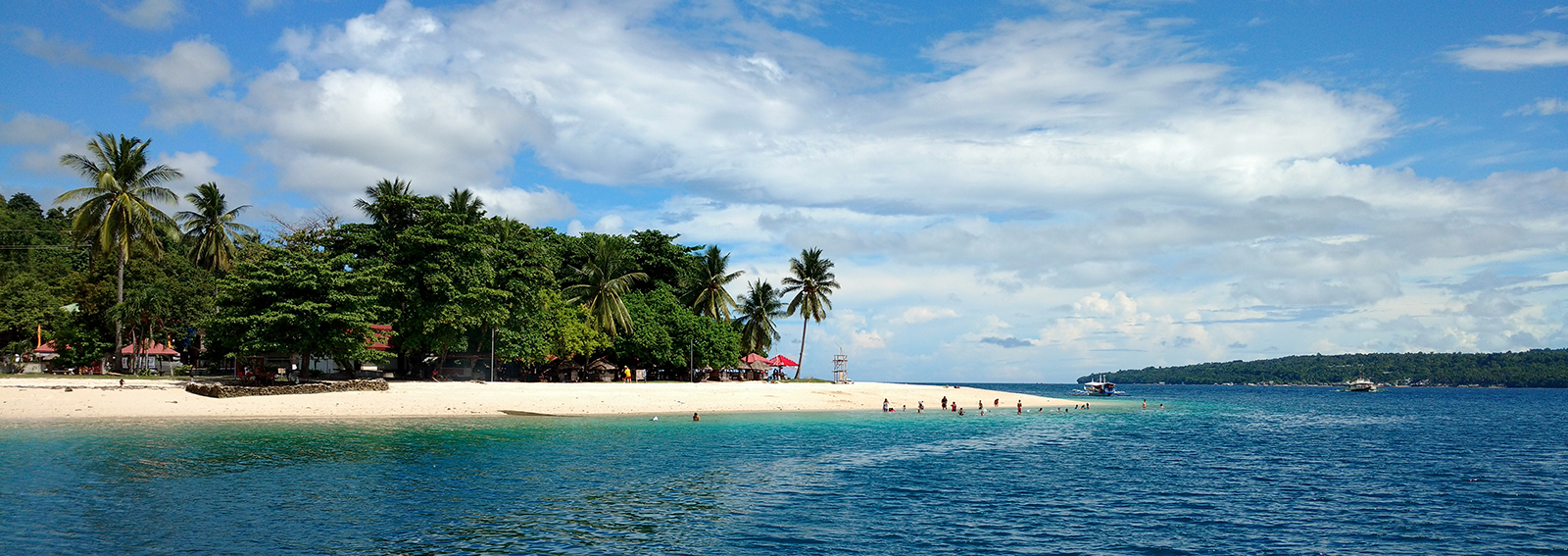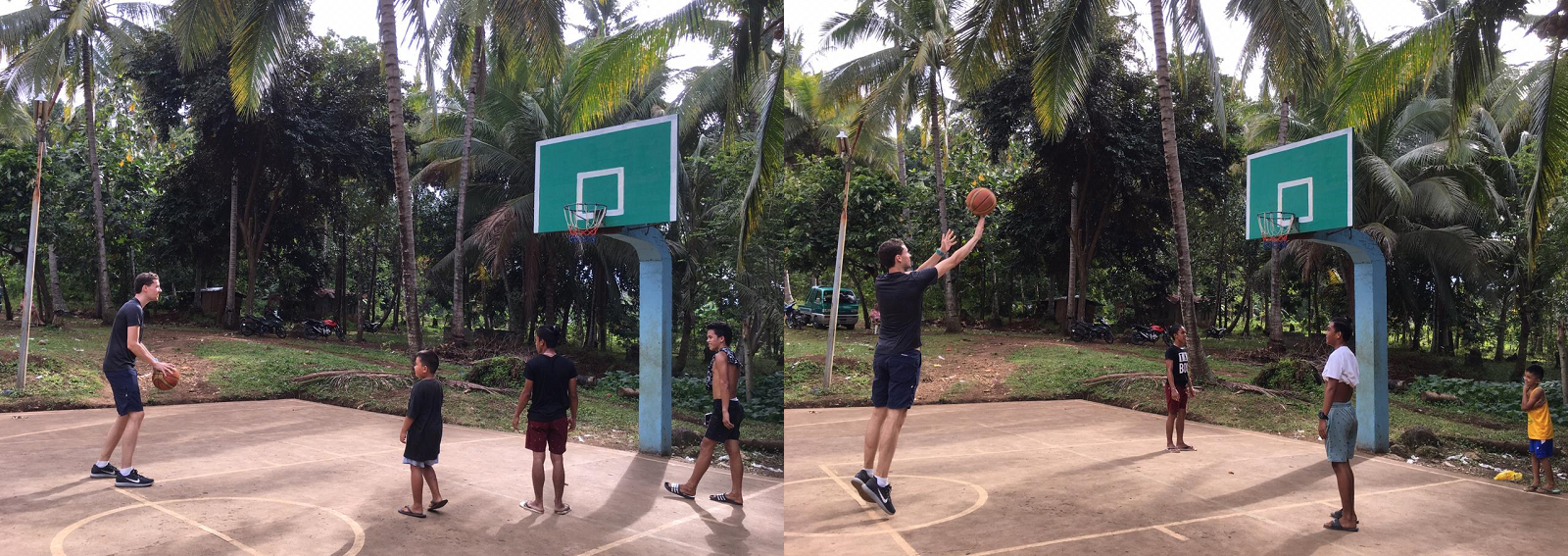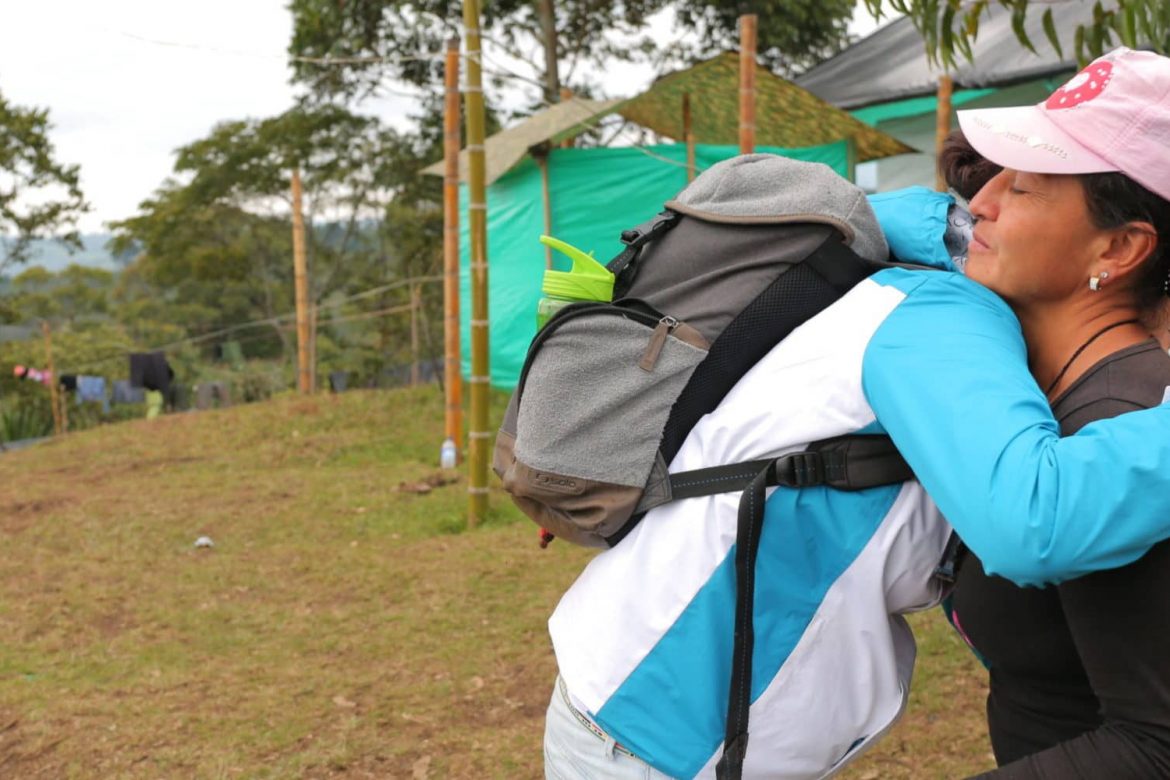He can scribble in his notebook for hours, erasing the sentences that don’t work and replacing them with second, third, or fourth attempts at perfect flow. His poetry is about our connections with infinity, love, philosophy, and nature. This year he might finally publish some of his work instead of just sharing it among friends.
His paintings are a different story. Like his poems they are about relationships, but more abstract—about the interplay between shapes, lines, and colours. They show a different side of the way things seem to naturally go and force the observer to really immerse. One of his works lets people wonder: “Am I looking at a sunset?” No, it’s merely an abstraction of one.
L‘art pour l’art. The young Colombian insists this philosophy is also part of his work as a young but already influential social leader and human rights defender. He’s found a way for art to be a stepping stone for social change—because even small creative acts, like making a painting, will be translated to other places, maybe even your nation’s Congress.
Leonardo Párraga Gutiérrez, 26, from Bogotá, a self-proclaimed “artist working on social integration,” has learned that when people create—especially when they create together—they become aware, empowered, and more engaged. And when they engage they will demand change.
We are the “Fucha”
One campaign that Leonardo says translated art into activism was the 2017 Arts Biennale in San Cristóbal district in Bogotá. His foundation BogotArt worked in partnership with local communities and organisations, such as the Colectiva Huertopía and Colectivo Arto Arte, to ward off the possibility of people being displaced because of planned urban development projects.
The campaign allowed residents to co-create different artworks, including murals, songs, and art made from recycled materials. One mural reads in big bright letters: “We are the Fucha,” referencing the river Río Fucha where, besides The Biennale, several campaigns were done, including the festival “El Cecilazo,” and “Barrios Vivos, Fucha Libre.” Another drawing pointedly shows an excavator clearing away trees and bushes where high rise buildings would soon be erected. Leonardo says these joint projects put the message out there that this territory is inhabited by people that are united, organised, and clear on the kind of community they want to be.
Buoyed by the local support, the San Cristóbal residents went to Congress where organisations from their district presented their perspectives on the building initiatives. They were heard by the government entities involved and, in the end, were able to buy more time. Two years later, not a single building project has been realised.
“They don’t want anything imposed on them,” Leonardo sums up the general mood among the San Cristóbal communities. The seven neighbourhoods still organise events, such as classroom talks about environmental protection, concerts, and movie projections. “The impact of art at the community level, when done with intention, is that it integrates people,” says the BogotArt director with a clarity and purpose uncommon for most twenty-six-year-olds. “And it’s an impact that can last,” he adds.
Click here to continue reading.
Photo credit: Justice & Peace Netherlands
This interview is part of a series of change maker stories that I wrote for the Dutch non-profit organisation Justice & Peace Netherlands.








